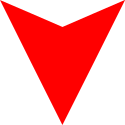Grand Prix Włoch 1953
| ||||
| 32. Grand Prix Formuły 1 | ||||
 | ||||
| Data | 13 września 1953 | |||
| Trasa | ||||
| Liczba okrążeń | 80 | |||
| Długość okrążenia | 6,300 km | |||
| Dystans | 504,000 km | |||
| Uczestnicy | ||||
| Zgłoszenia | 30 kierowców | |||
| Zakwalifikowało się | 30 kierowców | |||
| Ukończyło wyścig | 16 kierowców | |||
| Wyniki | ||||
| Pole position | Alberto Ascari (2:02,7, Ferrari) | |||
| Zwycięzca | Juan Manuel Fangio (2:49:45,9, Maserati) | |||
| Najszybsze okrążenie | Juan Manuel Fangio (2:04,5, Maserati) | |||
| 9. Grand Prix w sezonie 1953 | ||||
| Poprzednie | Grand Prix Szwajcarii | |||
| Grand Prix Włoch | ||||
| ||||
Grand Prix Włoch 1953 (oryg. Gran Premio d'Italia) – 9.(ostatnia) runda Mistrzostw Świata Formuły 1 w sezonie 1953, która odbyła się 13 września 1953 po raz 4. na torze Autodromo Nazionale Monza.
24. Grand Prix Włoch, 4. zaliczane do Mistrzostw Świata Formuły 1.
Na ostatnim zakręcie walczący o zwycięstwo Alberto Ascari i Giuseppe Farina zderzyli się. Skorzystał na tym jadący na trzecim miejscu Juan Manuel Fangio. Farina zdołał ukończyć wyścig, w przeciwieństwie do Ascariego.
Wyniki
Kwalifikacje
Źródło: statsf1.com[1]
Wyścig
Źródła: statsf1.com[2]
| P | + / – | Nr | Kierowca | Konstruktor | Opony | Okr. | Czas / Strata | Komentarz |
|---|---|---|---|---|---|---|---|---|
| 1 | 50 | Maserati | P | 80 | 2:49:45,9 | |||
| 2 | 6 | Ferrari | P | 80 | +1,4 | |||
| 3 | 2 | Ferrari | P | 79 | +1 okr. | |||
| 4 | 8 | Ferrari | P | 79 | +1 okr. | |||
| 5 | 36 | Gordini | E | 79 | +1 okr. | |||
| 6 | 40 | Gordini | E | 77 | +3 okr. | |||
| 7 | 56 | Maserati | P | 38 38 | +4 okr. | |||
| 8 | 10 | Ferrari | P | 75 | +5 okr. | |||
| 9 | 38 | Gordini | E | 75 | +5 okr. | |||
| 10 | 32 | OSCA | P | 72 | +8 okr. | |||
| 11 | 44 | Maserati | P | 72 | +8 okr. | |||
| 12 | 46 | Cooper-Bristol | D | 70 | +10 okr. | |||
| 13 | 28 | Cooper-Alta | D | 70 | +10 okr. | |||
| 14 | 48 | AFM-Bristol | E | 67 | +13 okr. | |||
| 15 | 16 | HWM-Alta | D | 67 | +13 okr. | |||
| 16 | 64 | Ferrari | D | 65 | +15 okr. | |||
| Niesklasyfikowani | ||||||||
| 4 | Ferrari | P | 79 | +1 okr. | wypadek | |||
| 52 | Maserati | P | 77 | +3 okr. | brak paliwa | |||
| 54 | Maserati | P | 75 | +5 okr. | wypadek | |||
| 58 | Maserati | P | 70 | +10 okr. | silnik | |||
| 20 | Connaught-Lea-Francis | D | 61 | +19 okr. | niesklasyfikowany | |||
| 30 | Cooper-Bristol | D | 57 | +23 okr. | niesklasyfikowany | |||
| 24 | Connaught-Lea-Francis | D | 56 | +24 okr. | niesklasyfikowany | |||
| 12 | Ferrari | P | 40 | +40 okr. | silnik | |||
| 22 | Connaught-Lea-Francis | D | 33 | +47 okr. | przepustnica | |||
| 42 | Maserati | P | 18 | +62 okr. | przekładnia | |||
| 34 | OSCA | P | 17 | +63 okr. | silnik | |||
| 18 | HWM-Alta | D | 14 | +66 okr. | silnik | |||
| 26 | Connaught-Lea-Francis | E | 7 | +73 okr. | system paliwowy | |||
| 14 | HWM-Alta | D | 6 | +74 okr. | silnik | |||
| P | + / – | Nr | Kierowca | Konstruktor | Opony | Okr. | Czas / Strata | Komentarz |
Najszybsze okrążenie
Źródło: statsf1.com[3]
| Nr | Kierowca | Konstruktor | Czas | Okr. |
|---|---|---|---|---|
| 50 | Maserati | 2:04,5 | 39 |
Prowadzenie w wyścigu
Źródło: statsf1.com[4]
| Nr | Kierowca | Konstruktor | Okrążenia | Suma | ||
|---|---|---|---|---|---|---|
| 4 | Ferrari | 1-6, 9, 14-24, 29-33, 36-40, 42-45, 47-49, 53-79 | 62 | |||
| 50 | Maserati | 7-8, 11, 25, 27-28, 34-35, 41, 50-52, 80 | 13 | |||
| 6 | Ferrari | 10, 12-13, 26, 46 | 5 | |||
Klasyfikacja po wyścigu
Pierwsza piątka otrzymywała punkty według klucza 8-6-4-3-2, 1 punkt przyznawany był dla kierowcy, który wykonał najszybsze okrążenie w wyścigu[5]. Klasyfikacja konstruktorów została wprowadzona w 1958 roku. Liczone było tylko 4 najlepsze wyścigi danego kierowcy. W nawiasach podano wszystkie zebrane punkty, nie uwzględniając zasady najlepszych wyścigów.
Uwzględniono tylko kierowców, którzy zdobyli jakiekolwiek punkty
| P | +/- | Kierowca | Starty | Punkty | P1 | P2 | P3 | PP | NO | NS |
|---|---|---|---|---|---|---|---|---|---|---|
| 1 | 0 | 8 | 34,5 (46,5) | 5 | - | - | 6 | 4 | 1 | |
| 2 | +1 | 8 | 28 (29,5) | 1 | 3 | - | 2 | 2 | 3 | |
| 3 | -1 | 8 | 26 (32) | 1 | 3 | 1 | - | - | 2 | |
| 4 | 0 | 8 | 19 (27) | 1 | - | 2 | - | - | - | |
| 5 | +1 | 8 | 17 | - | 2 | 1 | - | 1 | 2 | |
| 6 | -1 | 5 | 13,5 (14,5) | - | - | 3 | - | 2 | 1 | |
| 7 | 0 | 1 | 9 | 1 | - | - | 1 | 1 | - | |
| 8 | 0 | 7 | 7 | - | - | - | - | - | 3 | |
| 9 | 0 | 7 | 6,5 | - | - | 1 | - | - | 3 | |
| 10 | 0 | 1 | 6 | - | 1 | - | - | - | - | |
| 11 | 0 | 6 | 4 | - | - | 1 | - | - | 4 | |
| 12 | +2 | 8 | 4 | - | - | - | - | - | 4 | |
| 13 | -1 | 1 | 2 | - | - | 1 | - | - | - | |
| 13 | -1 | 1 | 2 | - | - | 1 | - | - | - | |
| 15 | 0 | 1 | 2 | - | - | - | - | - | - | |
| 15 | 0 | 1 | 2 | - | - | - | - | - | - | |
| 15 | 0 | 1 | 2 | - | - | - | - | - | - | |
| 18 | 0 | 1 | 1,5 | - | - | - | - | - | - | |
| 18 | 0 | 1 | 1,5 | - | - | - | - | - | - | |
| P | +/- | Kierowca | Starty | Punkty | P1 | P2 | P3 | PP | NO | NS |
Przypisy
- ↑ ITALY 1953 Qualifications (ang.). statsf1.com. [dostęp 2021-02-24].
- ↑ ITALY 1953 Result (ang.). statsf1.com. [dostęp 2021-02-24].
- ↑ ITALY 1953 Best Laps (ang.). statsf1.com. [dostęp 2021-02-24].
- ↑ ITALY 1953 Laps led (ang.). statsf1.com. [dostęp 2021-02-24].
- ↑ 1953 - STATS F1 (ang.). statsf1.com. [dostęp 2021-02-16].
Media użyte na tej stronie
The flag of Navassa Island is simply the United States flag. It does not have a "local" flag or "unofficial" flag; it is an uninhabited island. The version with a profile view was based on Flags of the World and as a fictional design has no status warranting a place on any Wiki. It was made up by a random person with no connection to the island, it has never flown on the island, and it has never received any sort of recognition or validation by any authority. The person quoted on that page has no authority to bestow a flag, "unofficial" or otherwise, on the island.
The national flag of Kingdom of Thailand since September 2017; there are total of 3 colours:
- Red represents the blood spilt to protect Thailand’s independence and often more simply described as representing the nation.
- White represents the religion of Buddhism, the predominant religion of the nation
- Blue represents the monarchy of the nation, which is recognised as the centre of Thai hearts.
Green arrow icon pointing up
Diagram of the Autodromo Nazionale di Monza after modified in 1950, hosted the Formula One World Championship Italian Grand Prix from 1950 to 1954













